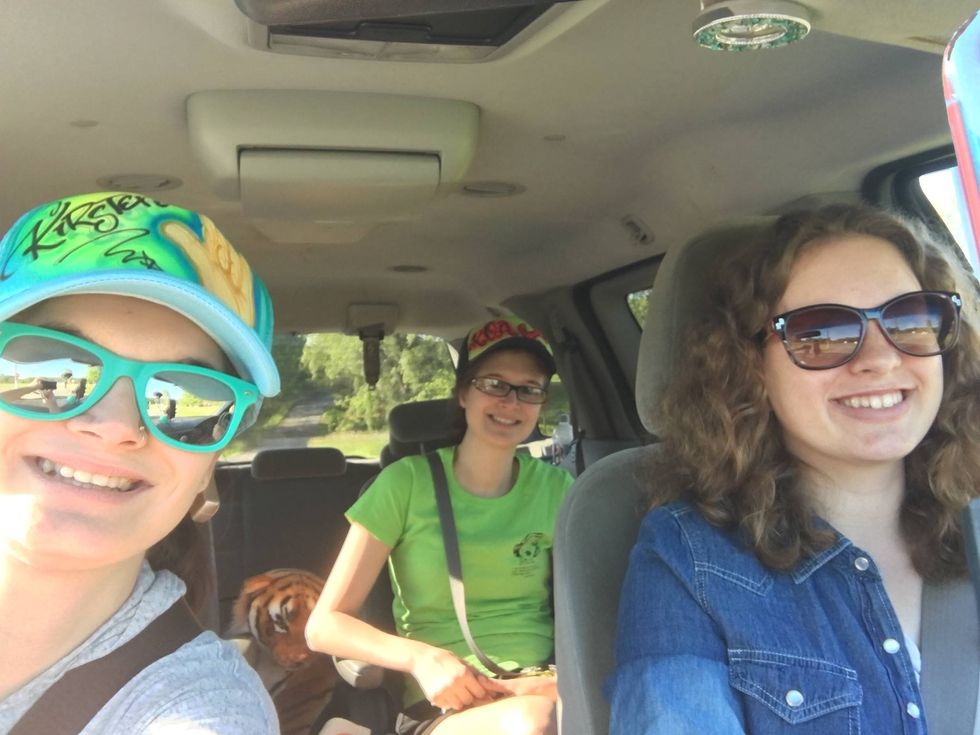Everybody knows maybe one or two people that is either hearing impaired or deaf. Unfortunately, communication between the hearing and the hard-of-hearing (HH) or Deaf is not as strong as it should be. Interpreters are usually available only on demand and a lot of services taken for granted are inaccessible by Deaf or HH people. A Deaf customer might walk into a restaurant by him or herself and be unable to fully communicate what he or she wants to the waiter because the waiter does not understand sign language.
Even a basic understanding of sign language can really help out a Deaf or HH person. A good number of Deaf people are willing to help someone learning sign progress and increase his or her vocabulary. Knowing the sign language alphabet can be monumental in figuring out what the Deaf person wants or needs. Although the alphabet is a good starting point, most Deaf or HH people prefer to not fingerspell every single word.
Anybody and everybody runs the risk of becoming deaf or HH at some point in life. With loud music, occupational hazards, and old age, hearing can diminish exponentially. The best way to combat that is to learn sign language and have that as a backup if the use of speech and/or hearing becomes nullified.
When starting to learn sign, it is important to keep in mind that it is a simpler language. Signing every single word like Libby Ketterer on YouTube is grammatically incorrect by American Sign Language standards to the point that signing every word becomes its own quasi-language called PSE (Pigeon-Signed English). Although it is possible to get a point across using PSE, it runs the risk of annoying the Deaf or HH person. Nobody wants to stand around all day waiting for someone to finish a sentence because they are signing every word in a thirty word sentence when it can be easily summed up in ten signs.
Another use for knowing sign language is the fact that it allows communication outside of the normal range of hearing. Someone may be far enough away that they cannot be heard through vocal communication, but sign language can be understood from a distance. Sign language is also useful in the consideration of law enforcement or emergency services because it can continue communications if there is no way to speak in an emergency situation.
An important point to keep in mind when communicating through sign is the reality that sign is in no way charades. It is considered offensive to pretend to know sign and make ridiculous movements instead of forming coherent sentences using a set vocabulary created by the deaf community. Several scandals have been unearthed recently where a fake interpreter has been employed to sign at political or social events and all they have succeeded in doing is angering the members of the deaf community with their gibberish.
As a final point of why sign language is important for hearing, HH, and Deaf people is the way it opens doors of communication and culture that might otherwise be alienated from the members of the hearing world. The deaf community has a plethora of art and expressionary culture that can only be fully appreciated if there is a gateway of correspondence that has been established. Also, some members of the deaf community may not have had access to a proper education in sign language and can become cut off from both the hearing and the deaf worlds because of a lack of an understood language. And while this does not mean that they are incapable of communicating, it does mean that it causes many difficulties because of a "different dialect" of communication.
All in all, sign language is a very important and very useful language to know or at least to be able to understand. The power of language opens doors to many beautiful experiences and cultural acceptance and sign language is as important of a piece of the overall mosaic of languages of the world as any other form of communication. Taking the time to learn sign will not only benefit members of the hearing community, but it will also provide insight into the deaf community.
















